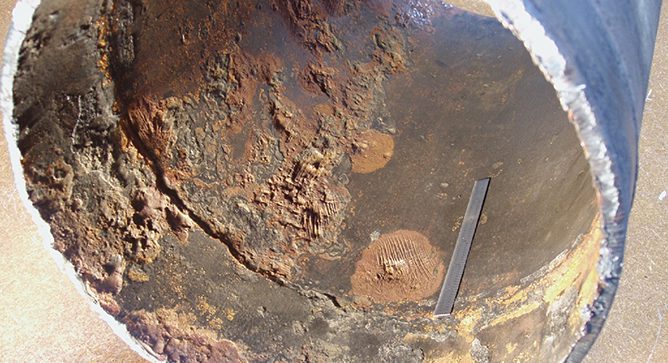News & Views, Volume 44 | Strategic Internal Corrosion Monitoring for Gas Pipelines
By: Lance Barton and Tom Pickthall (EnhanceCo)
REGULATORY OVERVIEW
 A March 16, 2017, advisory bulletin (Docket No. PHMSA-2016-0131 – “Pipeline Safety: Deactivation of Threats”) gave guidance on the deactivation of pipeline threats, including the threat of internal corrosion. On April 8, 2016, PHMSA issued a Notice of Proposed Rulemaking (NPRM) entitled “Safety of Gas Transmission and Gathering Pipelines”. Section §192.478 “Internal Corrosion Control: Onshore transmission monitoring and mitigation” of the NPRM would increase the scrutiny and requirements for monitoring and mitigating the threat of internal corrosion for the gas industry.
A March 16, 2017, advisory bulletin (Docket No. PHMSA-2016-0131 – “Pipeline Safety: Deactivation of Threats”) gave guidance on the deactivation of pipeline threats, including the threat of internal corrosion. On April 8, 2016, PHMSA issued a Notice of Proposed Rulemaking (NPRM) entitled “Safety of Gas Transmission and Gathering Pipelines”. Section §192.478 “Internal Corrosion Control: Onshore transmission monitoring and mitigation” of the NPRM would increase the scrutiny and requirements for monitoring and mitigating the threat of internal corrosion for the gas industry.
This bulletin and NPRM reinforce the requirements of CFR part 192-subpart O, Section 192.937, requiring gas pipeline operators to continuously assess their pipelines for the threat of internal corrosion as part of their overall integrity management program. One of the requirements is to determine if the gas entering the system is corrosive or not corrosive. The optimal way to prove that the gas is not corrosive is to build a thorough continuous monitoring program that considers guidance from the NPRM and the advisory bulletin.






